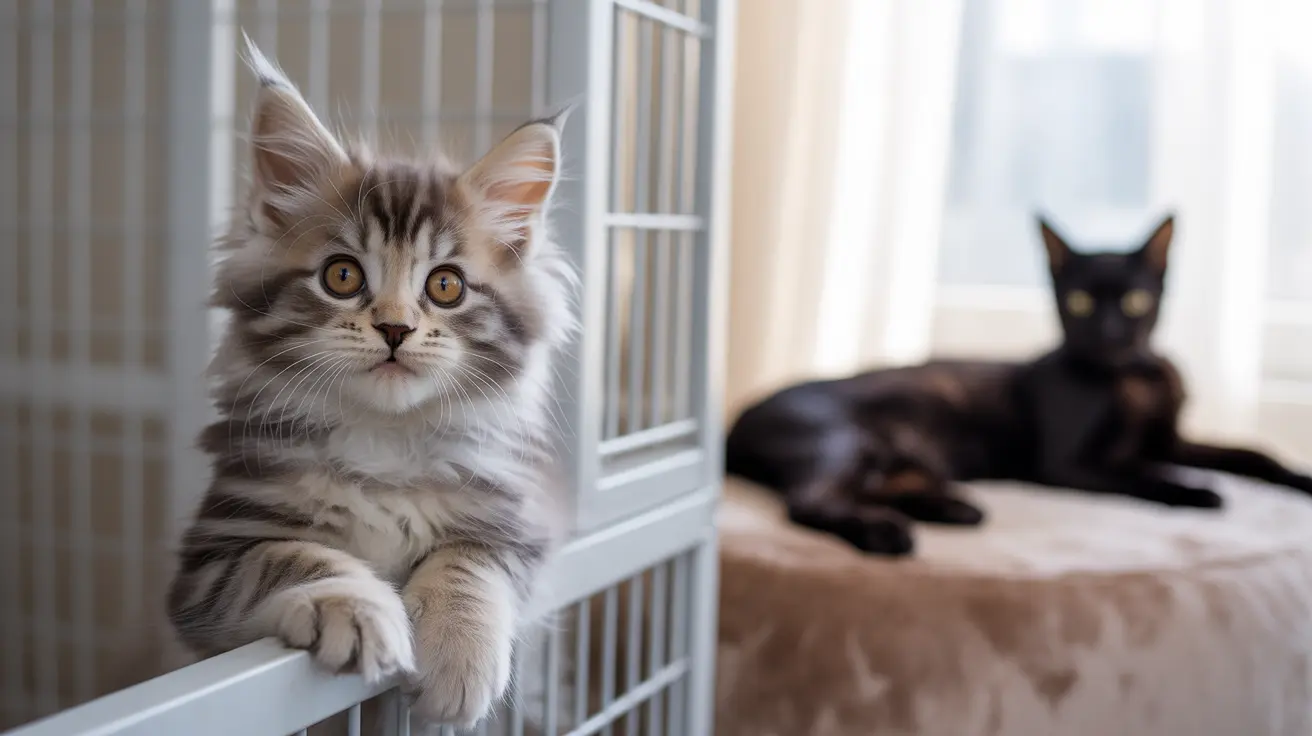Bringing a new kitten into your home can be an exciting yet challenging experience, especially when you already have a resident cat. Successfully introducing a kitten to a cat requires patience, understanding, and a strategic approach to ensure both animals feel secure and comfortable during the transition.
In this comprehensive guide, we'll explore proven methods for introducing your new kitten to your existing cat, helping you create a harmonious household where both felines can thrive together.
Setting Up for Success: Before the Introduction
Before bringing your new kitten home, it's essential to prepare your space properly. Create a separate room for your kitten equipped with:
- A comfortable bed
- Food and water bowls
- A litter box
- Toys and scratching posts
- Hiding spots and elevated perches
This dedicated space allows your kitten to adjust to their new environment while keeping your resident cat's territory intact during the initial adjustment period.
The Power of Scent Exchange
Cats rely heavily on scent for communication and territory marking. Begin the introduction process by exchanging scents between your resident cat and the new kitten:
- Swap bedding between the animals
- Use the same towel to pet both cats
- Exchange toys between their separate spaces
- Place feeding stations on opposite sides of a closed door
Visual Introduction Through Barriers
Once both cats appear comfortable with each other's scents (usually after 3-7 days), progress to controlled visual contact:
- Use a baby gate with a blanket partially covering it
- Create a small gap in the door using a door stopper
- Employ a large wire crate for supervised viewing sessions
Supervised Face-to-Face Meetings
When both cats show calm behavior during visual contact, begin short, supervised meetings:
- Keep initial sessions brief (5-10 minutes)
- Have treats ready to reward calm behavior
- Ensure multiple escape routes are available
- Never force interaction between the cats
- End sessions before either cat becomes stressed
Managing Resources to Prevent Conflict
Proper resource management is crucial for maintaining peace between your cats:
- Provide multiple litter boxes (one more than the number of cats)
- Set up separate feeding stations
- Create various elevated resting spots
- Ensure multiple scratching posts are available
- Maintain individual water bowls in different locations
Reading Feline Body Language
Understanding cat behavior helps you gauge the success of the introduction process. Watch for:
Positive Signs:
- Mutual grooming
- Playful behavior
- Relaxed body postures
- Shared sleeping spaces
Warning Signs:
- Excessive hissing or growling
- Flattened ears
- Tail puffing
- Territorial marking
- Food or litter box avoidance
Frequently Asked Questions
How do I introduce a kitten to my older cat without causing stress or aggression?
Follow a gradual introduction process starting with scent exchange, progressing to visual contact through barriers, and finally supervised face-to-face meetings. Never rush the process and always ensure both animals have escape routes available.
What are the best steps for scent swapping when introducing a new kitten to a resident cat?
Exchange bedding between the cats, use the same towel to pet both animals, and place feeding stations on opposite sides of a closed door. This helps create positive associations with each other's scents.
How long should I keep my new kitten separated from my adult cat during the introduction process?
The separation period typically lasts 1-2 weeks but can vary depending on the cats' personalities. Wait until both cats show relaxed behavior around each other's scents before progressing to visual contact.
What are the signs that my cat and kitten are ready to meet face-to-face?
Look for calm behavior during visual contact, curious but non-aggressive interest in each other, and comfortable eating or playing while aware of each other's presence through the barrier.
How can I tell if my cat is stressed or upset by the new kitten, and what should I do about it?
Signs of stress include hiding, aggressive behavior, changes in eating or litter box habits, and excessive grooming. If you notice these signs, return to the previous step in the introduction process and progress more slowly.
Conclusion
Successfully introducing a kitten to your resident cat requires patience, preparation, and careful observation. By following these guidelines and respecting each cat's need for time and space to adjust, you can create a peaceful multi-cat household where both animals feel secure and valued.
Remember that every cat is unique, and the introduction process may take anywhere from a few weeks to several months. Stay consistent with your approach, and don't hesitate to consult with a veterinarian or feline behaviorist if you encounter persistent challenges.






